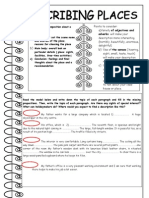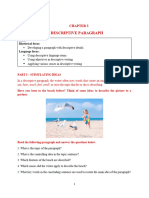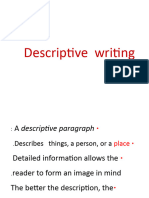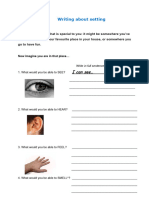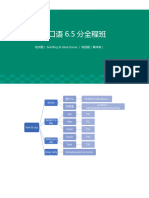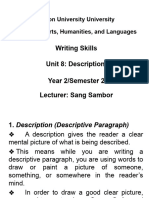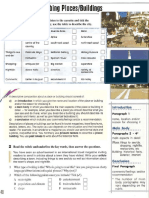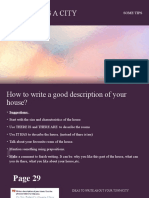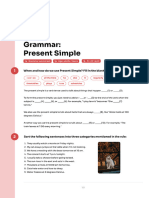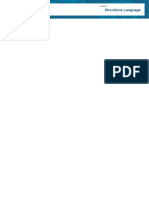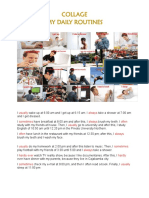0% found this document useful (0 votes)
31 views3 pagesDescriptive Composition
The document outlines the structure and elements of a descriptive essay about a place or building, including an introduction, main body, and conclusion. It provides guidance on the use of adjectives, adverbs, and tenses for effective descriptions, as well as examples and exercises for practice. Additionally, it emphasizes the importance of organization and detail in creating vivid imagery for the reader.
Uploaded by
Halyna OnyshchakCopyright
© © All Rights Reserved
We take content rights seriously. If you suspect this is your content, claim it here.
Available Formats
Download as DOCX, PDF, TXT or read online on Scribd
0% found this document useful (0 votes)
31 views3 pagesDescriptive Composition
The document outlines the structure and elements of a descriptive essay about a place or building, including an introduction, main body, and conclusion. It provides guidance on the use of adjectives, adverbs, and tenses for effective descriptions, as well as examples and exercises for practice. Additionally, it emphasizes the importance of organization and detail in creating vivid imagery for the reader.
Uploaded by
Halyna OnyshchakCopyright
© © All Rights Reserved
We take content rights seriously. If you suspect this is your content, claim it here.
Available Formats
Download as DOCX, PDF, TXT or read online on Scribd
/ 3
